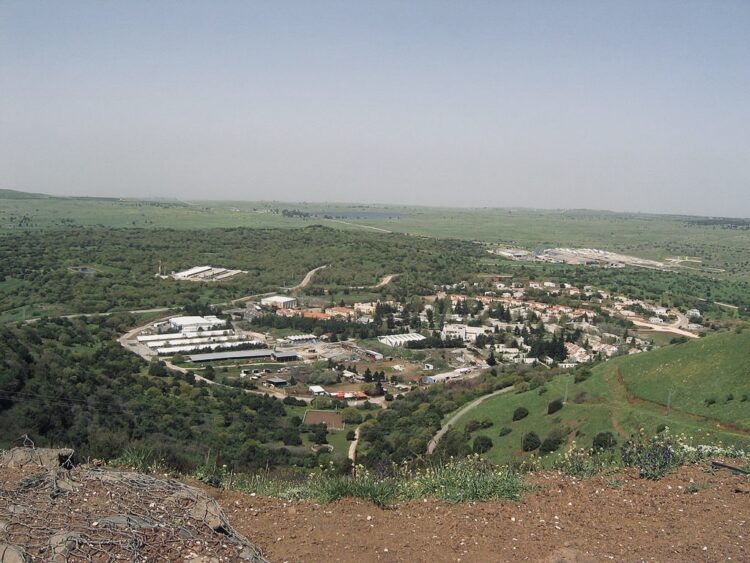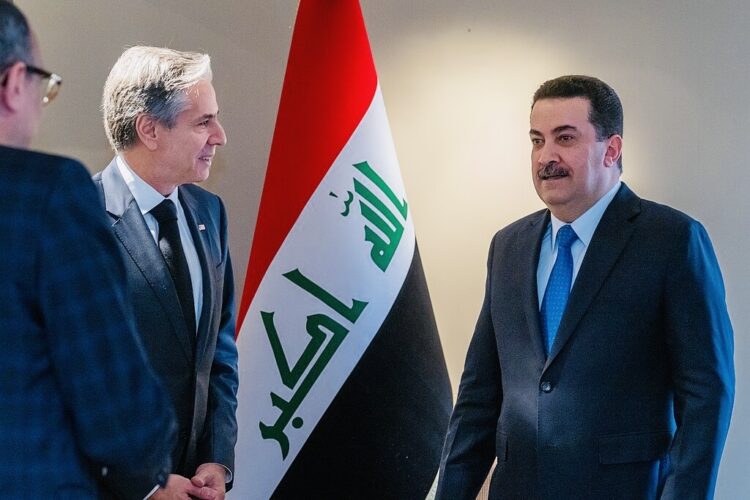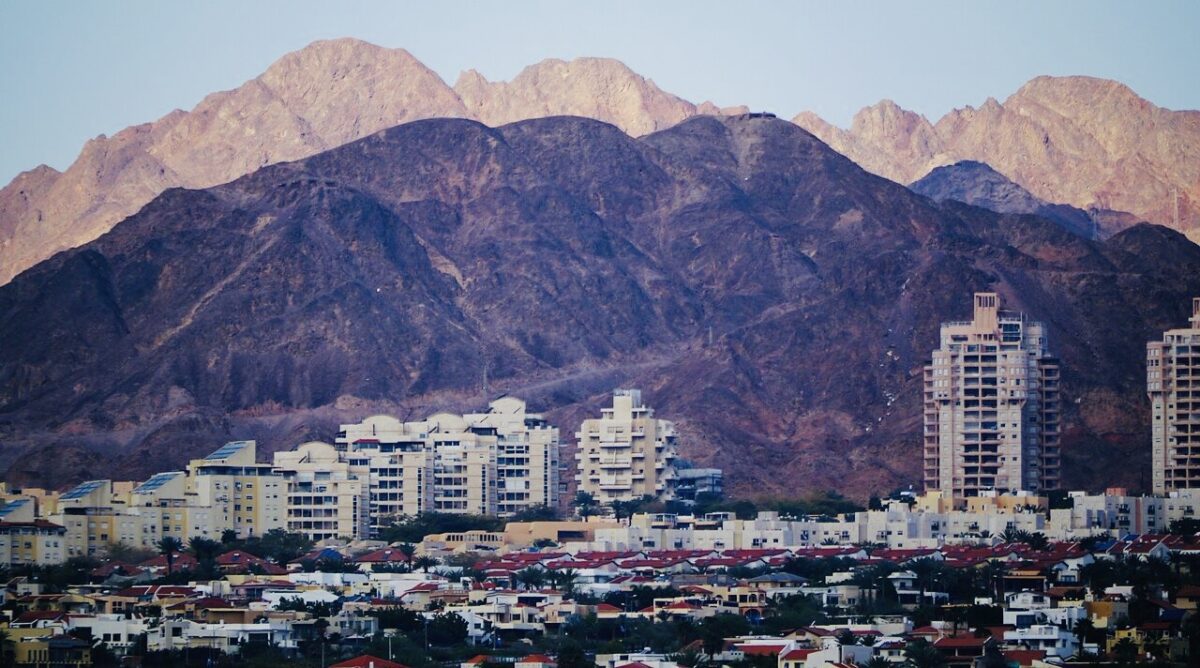Israel is fighting a two-front war along its southern and northern borders, battling Hamas in the Gaza Strip and Hezbollah in Lebanon, both of which are Iranian proxies. But far in the east, in Iraq, Israel faces another enemy in the guise of the Islamic Resistance movement, a member of Iran’s fiercely anti-Israel Axis of Resistance. In the past ten months, this group has launched a barrage of missiles and drones at Israeli territory and attacked U.S. bases in the Middle East.
Consisting of a coalition of multiple militias over which the Iraqi government of Prime Minister Mohammed al-Sudani has little or no control, the Islamic Resistance started targeting Israel about a month after Hamas invaded southern Israel, killing roughly 1,200 people and kidnapping about 250 Israelis and foreign nationals, and Hezbollah began firing rockets, missiles, mortars and drones into Israeli territory.
Iraqi militias have claimed responsibility for more than 100 missile and drone launches aimed at Israel and have carried out some 200 strikes against U.S. bases in Iraq, Syria and Jordan.
Last April, the Islamic Resistance joined Iran in attacking Israel in a massive missile and drone assault that was largely foiled by Israel, the United States, Britain and Jordan.
In its latest strike on Israel, on September 25, the Islamic Resistance launched two drones at the southern port of Eilat in support of Hezbollah and the Palestinians in Gaza. The first one caused minor damage and lightly injured two civilians. The second one was intercepted and shot down by an Israeli naval vessel over the Red Sea, where pro-Iranian Houthi rebels, based in Yemen, have targeted Israeli and international shipping.
“We are following the threat from Iraq,” Daniel Hagari, Israel’s military spokesman, said. He declined to state whether Israel would retaliate, but said that Israel would do whatever is needed to address the matter.
In recent years, the Israeli Air Force has reportedly bombed Islamic Resistance bases in Iraq, but the Israeli government has taken no credit for these bombing raids.
The latest Iraqi strike against Eilat, Israel’s gateway to Africa and Asia, was the third time since last November that it was targeted by the Islamic Resistance. In November, an empty school was hit by a drone. And this past April, a drone smashed into an Israeli Navy building.
Having promised to “strike enemy strongholds,” the Islamic Resistance has stepped up its attacks on Israel in the last few months. It has fired rockets and drones at Haifa, the Arava region, the Jordan Valley, settlements on the Golan Heights like Merom Golan and Ein Zivan, and communities along the shore of the Sea of Galilee such as Tiberias.

While these projectiles have set off sirens, virtually all of them have been downed by the Israeli Air Force or Israel’s array of missile defence systems, resulting in few injuries and little property destruction.
Iraqi militias in the Islamic Resistance have also attempted to smuggle men and materiel into Jordan, the second Arab country to sign a peace treaty with Israel. Their objective was to carry out terrorist acts in Israel and smuggle arms to Palestinians in the West Bank.
Last April, a senior Islamic Resistance official offered to send weapons and munitions to Jordanians willing to fight Israel.
The Jordanian government of King Abdullah II regarded his provocative offer as an attempt to destabilize Jordan, an ally of the United States.
In addition to attacking Israel, the Islamic Resistance has been in the forefront of striking U.S. bases in the region. These attacks have increased in frequency since the 2020 assassinations by the U.S. of Qassem Soleimani — the commander of Iran’s Quds Force, an arm of the Islamic Revolutionary Guards Corps — and of Abu Mahdi al-Muhandis, an Iraqi militia leader.
In the wake of these incidents, Iraq’s parliament passed a non-binding resolution demanding the withdrawal of U.S. forces in the country.
At its peak following the second Gulf War in 2003, the United States had about 170,000 troops in Iraq. Today, 2,500 American soldiers are stationed there, tasked with degrading the remnants of the Islamic State organization, protecting the U.S. embassy in Baghdad and providing military assistance to the Iraqi armed forces.
U.S. Secretary of Defence Lloyd Austin has said that the United States is ready to remain in Iraq in a non-combat role, but the Islamic Resistance seeks the withdrawal of American forces and has threatened to attack them if they do not leave.
Keen on maintaining good relations with the United States, the Iraqi government has so far been reluctant to accede to its demand. But since some leaders in the Islamic Resistance prop up Al-Sudani’s government, he is under tremendous pressure to oust the American garrison.

This objective is fully endorsed by Iran, which shares a long border with Iraq.
Since the violent overthrow of Saddam Hussein’s Baathist regime 21 years ago, Iraq has had to balance its relations with Iran and the United States. On the whole, Iran has gained the upper hand in this struggle for dominance.
Earlier this month, Iran’s newly elected president, Masoud Pezeshkian, turned up in Iraq on a three-day visit. Significantly enough, it was his first trip abroad since the election. Not surprisingly, one of the topics on the agenda was the departure of U.S. troops from Iraq.
Since the last Gulf War, Iran has expanded its political and economic clout in Iraq by a significant degree. Iraq, after China, is Iran’s biggest trade partner. Given Iran’s influence, the Islamic Resistance is free to attack Israel without internal repercussions.
Which is why Israel should expect yet more drone and missile attacks from the Islamic Resistance.
